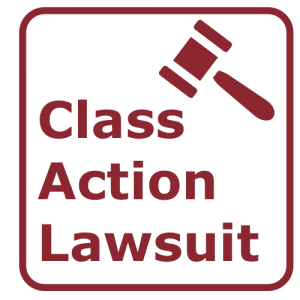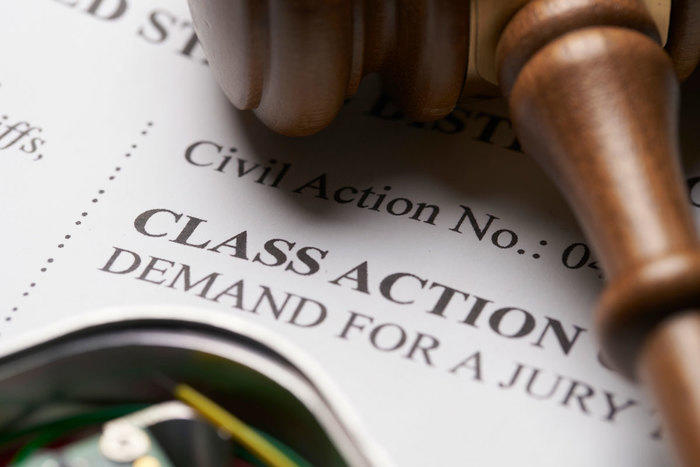Legal Understanding: Browsing the Landscape of Class Action Lawsuit Situations
Wiki Article
Comprehending Class Action Lawsuit: A Guide for Lawyers
Course activity lawsuits have become an essential part of the lawful landscape, enabling for the loan consolidation of numerous cases right into a solitary activity. For legal representatives, comprehending the intricacies of course activity lawsuits is crucial in properly representing their customers. This detailed guide checks out the principles of class activity suits, from identifying potential course participants to navigating the accreditation process. In addition, it explores key strategies for taking care of class action lawsuits and offers insights right into getting and discussing approval for negotiations. By diving into the complexities of course action lawsuits, this overview gears up legal representatives with the understanding and tools required to successfully browse this complex location of law.The Essentials of Course Action Claims
Course action claims are a legal system used to consolidate comparable cases from a group of individuals into a solitary suit, offering a economical and reliable approach to seeking justice and resolution. This type of claim permits a depictive plaintiff, acting on behalf of the entire course, to bring a case versus an offender that has supposedly created damage or violated the civil liberties of several people.The fundamental requirements for bringing a class activity claim consist of numerosity, commonality, typicality, and adequacy of depiction. Numerosity refers to the truth that the class must be so huge that joinder of all participants would be not practical.
Class action legal actions can be beneficial for both defendants and complainants. For offenders, it provides the possibility to efficiently solve multiple insurance claims in a single suit, staying clear of the need to protect versus numerous private claims.
Identifying and Assessing Potential Class Members
After developing the standard requirements for a class activity lawsuit, the next step is to recognize and assess prospective course participants. This process includes establishing that may belong to the class and examining their cases to determine if they meet the needed requirements.To identify potential class members, lawyers usually carry out considerable study and gather pertinent information. This may involve assessing papers, performing interviews, and examining documents to determine individuals or entities that may have been influenced by the alleged misdeed. It is important to establish a clear and detailed list of potential course participants to make sure that all impacted parties are consisted of in the legal action.
Once possible class participants have been identified, the following step is to analyze their insurance claims. This involves reviewing the values of each private case to figure out if they meet the lawful requirements for course qualification. Lawyers need to very carefully assess the facts, proof, and lawful theories of each possible course member's insurance claim to ensure that they have a feasible instance.
Evaluating possible course members likewise entails identifying whether they satisfy the course definition and have actually experienced similar injury as an outcome of the offender's actions. This calls for contrasting the truths and scenarios of each potential class member's scenario to the accusations and lawful concepts presented in the claim.
Navigating the Class Accreditation Refine
To efficiently navigate the class certification process, attorneys should diligently abide by the procedural needs stated by the court. Course qualification is a vital action in a course action lawsuit, as it identifies whether an instance can continue as a course action, representing a team of people that have comparable cases versus a defendant. The procedure entails pleasing particular standards, such as numerosity, commonness, typicality, and adequacy of representation.Firstly, attorneys should establish numerosity by demonstrating that the course is so huge that private joinder is not practical. This can be achieved via evidence or specialist testament. They have to establish commonness by revealing that there are typical inquiries of law or fact that predominate over specific concerns. This requires an extensive evaluation of the defenses and cases involved.
Following, lawyers must show typicality, which means that the depictive complainant's insurance claims are typical of the insurance claims of the class participants. This makes certain that the rate of interests of the representative plaintiff line up with the interests of the course. Last but not least, attorneys must show adequacy of representation, meaning that the depictive complainant and their guidance will rather and effectively represent the interests of the class.
To browse this procedure successfully, attorneys must completely prepare by carrying my review here out comprehensive research study, collecting evidence, and developing a compelling debate that pleases each of these criteria. They should additionally be prepared to react to any difficulties or arguments elevated by the offender. By vigilantly adhering to the procedural demands stated by the court, legal representatives visit this web-site can enhance their possibilities of acquiring course qualification and progressing the interests of the class members.

Trick Techniques for Taking Care Of Class Action Lawsuits
Upon successfully navigating the course certification process, legal representatives must then apply essential methods for effectively handling course activity litigation. These techniques are vital to ensure that the situation continues efficiently and successfully, ultimately optimizing the chances of a beneficial result for the course participants.
One trick strategy is to establish a strong and cohesive legal team (Class action lawsuit). This involves putting together a team of attorneys with competence in class activity litigation, as well as other relevant locations such as the details market or subject matter associated with the instance. A well-rounded team can bring different point of views and skills to the table, improving the general efficiency of the litigation
One more essential technique is to establish a thorough and well-balanced lawsuits plan. This plan should outline the overall purposes of the instance, in addition to the certain legal theories and arguments that will certainly be gone after. It ought to also include a timeline and spending plan to make certain that the situation remains on track and within the allotted sources.
In addition, attorneys ought to proactively involve with the course members throughout the lawsuits process (Class action lawsuit). This consists of supplying routine updates on the progress of the instance, seeking input and responses from the course members, and resolving any type of concerns or concerns they might have. By promoting open interaction and partnership, lawyers can construct count on and assistance among the course participants, which can be crucial in accomplishing an effective resolution
Resolving Class Action Claims: Negotiation and Approval
When it concerns clearing up class action legal actions, efficient arrangement and acquiring authorization are vital steps in accomplishing a resolution. Course activity suits are intricate and involve a multitude of plaintiffs, making it vital to get to a settlement that is adequate and reasonable to all parties included.
When a settlement contract is reached, it needs to be accepted by the court. The court's duty in this procedure is to make certain that the negotiation is reasonable, reasonable, and properly secures the passions of the class participants. The court will consider aspects such as the nature of the cases, the toughness of the proof, the possible healing for the course members, and any type of objections increased by class members.
Getting court authorization is crucial as it provides finality to the negotiation and shields the passions of the course members. It guarantees that the settlement is binding and enforceable, and course participants can get their rightful payment.
Conclusion

Class activity lawsuits have actually become an essential component of the legal landscape, allowing for the loan consolidation of several claims right into a single activity. Class accreditation is a crucial action in a class activity lawsuit, as it figures out whether a case can continue as a course action, standing for a group of individuals that have similar insurance claims versus an accused. By faithfully adhering to the step-by-step needs set forth by the court, legal representatives can enhance their opportunities of obtaining course accreditation and progressing the interests of the course participants.
The court will think about variables such as the nature of the claims, the stamina of the proof, the potential healing for the course participants, and any objections increased by course members.
By identifying and examining potential class members, lawyers can figure out the stability of a class action suit.
Report this wiki page